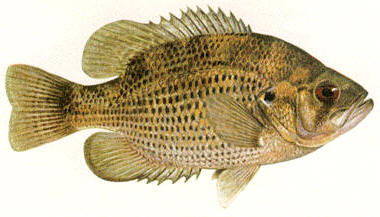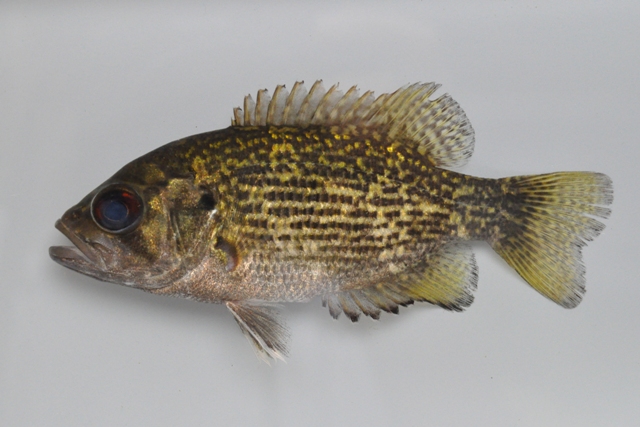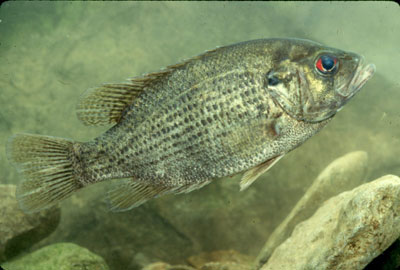
Ambloplites rupestris
FAMILY
Centrarchidae
TAXONOMY
Ambloplites rupestris Rafinesque, 1817, Lakes of New York,
Vermont, United States. No subspecies are recognized.
OTHER COMMON NAMES
English: Goggle eye, northern rock bass, redeye; French:
Crapet de roche; German: Gemeiner felsenbarsch, gemeiner
sonnenbarsch.
PHYSICAL CHARACTERISTICS
Maximum total length 17 in (43.2 cm), typically little more
than one-half that. Large-mouthed, red-eyed fish with rows of
small, chocolate-colored squares along the sides of its greenish
to brownish body.
DISTRIBUTION
North America from the Mississippi Valley almost to the Atlantic
coast, and Lake Winnipeg to Missouri and the northern
boundaries of Georgia and Alabama. Also widely introduced
worldwide.
HABITAT
Heavily vegetated areas of freshwater lakes and ponds, as well
as clear, rocky streams.
BEHAVIOR
Schools in winter, becomes solitary when breeding season
commences in the spring.
FEEDING ECOLOGY AND DIET
Feeds on aquatic plants, invertebrates, and fishes, occasionally
conspecifics.
REPRODUCTIVE BIOLOGY
Spawns in late spring and early summer over male-constructed
and guarded nests. The demersal, adhesive eggs hatch in three
to four days. The male continues to protect the young as long
as they remain in the nest area. Once they scatter, usually
within a few days, protection ceases. They reach sexual maturity
at three to five years.
CONSERVATION STATUS
Not threatened.
SIGNIFICANCE TO HUMANS
Minor sport and commercial fishes.
Photo Gallery of - Rock bass





 Animalia Life
Animalia Life